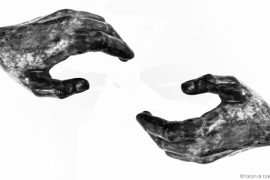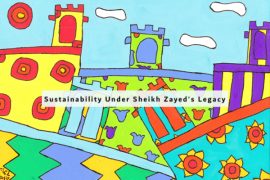Article in brief: No matter what race, religion, or culture you are, there is more that unites us than that which divides us.

There are four things that I think unites a region: physical barriers, social development, political union, and interdependence. Today, ISIS is destroying physical barriers between Iraq and Syria, claiming the “End of Sykes-Picot”. In their perspective, it’s the almost 100 year policy, Sykes-Picot, that carved up the Middle East into French and British colonies and caused the Middle East to be in the state it is in today. Although the Sykes-Picot did play a role, however, it is not the reason as to why the Middle East is in the state it is today. The Sykes-Picot is just a quarter of the problem, and physical barriers are a minor contributor to division in the Middle East. To understand what the Sykes-Picot agreement is, one must go back to the 1900’s and look into the history of the Middle East.
The history of modern states and physical barriers in the Middle East goes back to the 1900’s. In 1915, the British made an agreement with the Arabs, in what is known as the McMahon-Sharif Husayn correspondence letters ( United States Department of State 1969). The letters state that if the Arabs revolt against the Ottomans they will be given their own independent state from Damascus, Baghdad, and all the way to Aden.
However, at the same time, there was a secret agreement known by the name of the British and French representatives, Sykes and Picot. It was an agreement between these two states in 1916 to carve up and divide the Middle East into their own spheres of influence or colonies. Led by Lawrence of Arabia, the Arabs revolted against the Ottomans in what was known as the Arab Revolt in 1918. However, the Arabs never got what they were promised, and the dream of an independent state began to slip away. Shortly after the fall of the Ottomans, lands throughout the Middle East were up for the taking by British and French powers. So when Middle Eastern people, specifically the Gulf, state that their countries are young, they are merely stating the time of which they left from the divisional power of Britain and France.
After the Arab revolt, the social development of nationalism started to rise between states, and before you know it, we had Saudis, Bahrainis, Syrians, or Emiratis. A national identity grew within these states that brought them together in a unique setting as opposed to the historic use of a religious identity in the region. This caused a tension point within communities, especially those who believe in a regional Islamic identity as opposed to a national, or ethnic identity. ISIS, AlQaeda, Boko Haram, amongst other organizations believe that they must destroy these national states in order to unite the Middle East. However, history teaches us that there are other possible ways to unite a people than to destroy their identities.
In 1958, Jamal Abdul Nasser, president of Egypt and Shukri AlQuwatli, president of Syria established the first nationalistic united state, known as the United Arab Republic (UAR). However, due to various political events, including the death of Jamal Abdul Nasser and the Syrian coup, the state only lasted three years. Jamal Abdul Nasser acknowledged the existence of national identities and adapted to modern realities. Do you know who also adapted to modern realities? Our very own founding father, Sheikh Zayed Al Nahyan (may Allah rest his soul). It is with the same perspective of UAR that one can easily derive the establishment of the United Arab Emirates in 1971. Seven different emirates throughout a region, united to a single state entity. One thing that Sheikh Zayed Al Nahyan learnt from the UAR is how to preserve ones sovereignty while contributing to a greater unity. Today, the United Arab Emirates is a perfect example of what a national unity can achieve, if done correctly.
With that political sense of unity, interdependence also plays a major role in the Middle East. Interdependence is a term popularized by the famous American economist Richard N. Cooper. It is a situation where two states are highly dependent on each other, that any military transgression between each other is far too risky and costly for both parties. However, unlike the example given with political unity, economic interdependence does not mean that both states are now united as one. But rather that both states are working strongly together and the consequences of not working together will damage both economies. This is mostly achieved by high economic cooperation and integration of markets between the states.
Today, Saudi Arabia, Kuwait, and the UAE have funded the Egyptian economy with approximately $23 billion USD (Daily News Egypt 2015). This is an example of rising economic interdependence between states in the Middle East. Although still short handed, the Middle East has a long way to go if they want to achieve economic interdependence.
According to The Observatory of Economic Complexity, a project by MIT University to track economic activity, most Middle Eastern states don’t trade as heavily with one another. Take Saudi Arabia, UAE, or even Algeria for example; none of the top five importers or exporters is an Arab state (MIT 2015). This can be troublesome to the region, because if a neighboring state falls, having no economic ties may mean caring less for the misfortune of others. One of the world’s richest countries, Saudi Arabia, neighbors one of the poorest countries, Yemen. Surely this example alone tells us how far behind the region may be in regards to economic interdependence.
Physical barriers, social development, political union, and interdependence are all examples of the different forms of unity the Middle East has witnessed in its modern era. The destruction of states and the demolition of physical boundaries are not the answer to a united region. Unity comes in various shapes and forms, and a united Middle East does not come by force. War, murder, and terrorism are not means of uniting the region, rather, we should start at a smaller yet significant onset: a working social structure.
References:
- United States Department of State. Jordan – Syria Boundary. Intel, Washington: United States Government, 1969.
- Daily News Egypt. Saudi Arabia, UAE, Kuwait strong backers of Egypt’s economy. March 14, 2015. http://www.dailynewsegypt.com/2015/03/14/saudi-arabia-uae-kuwait-strong-backers-of-egypts-economy/ (accessed March 15, 2015).
- The Observatory of Economic Complexity. 2015. http://atlas.media.mit.edu/ (accessed March 22, 2015).




1 Comment